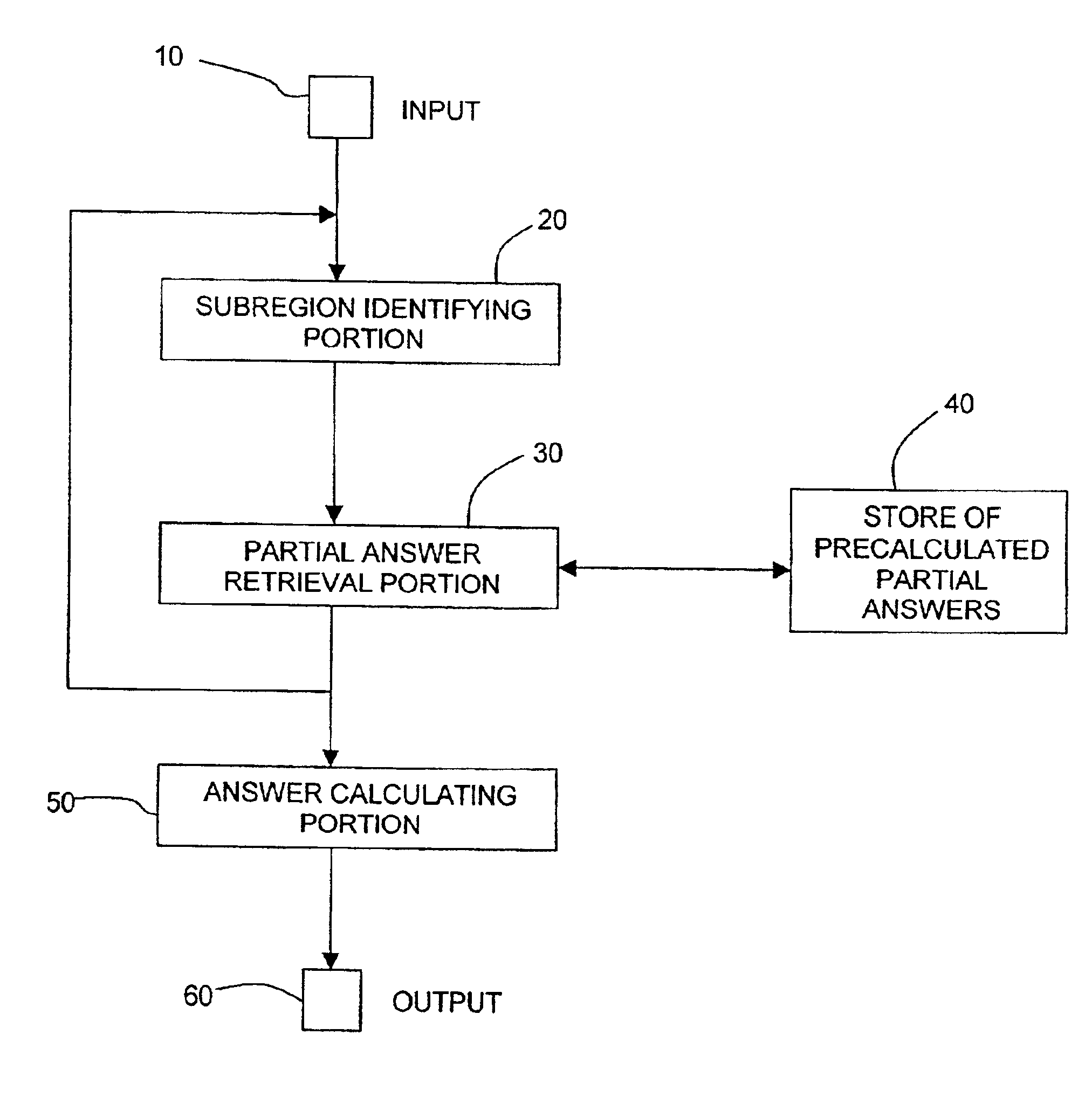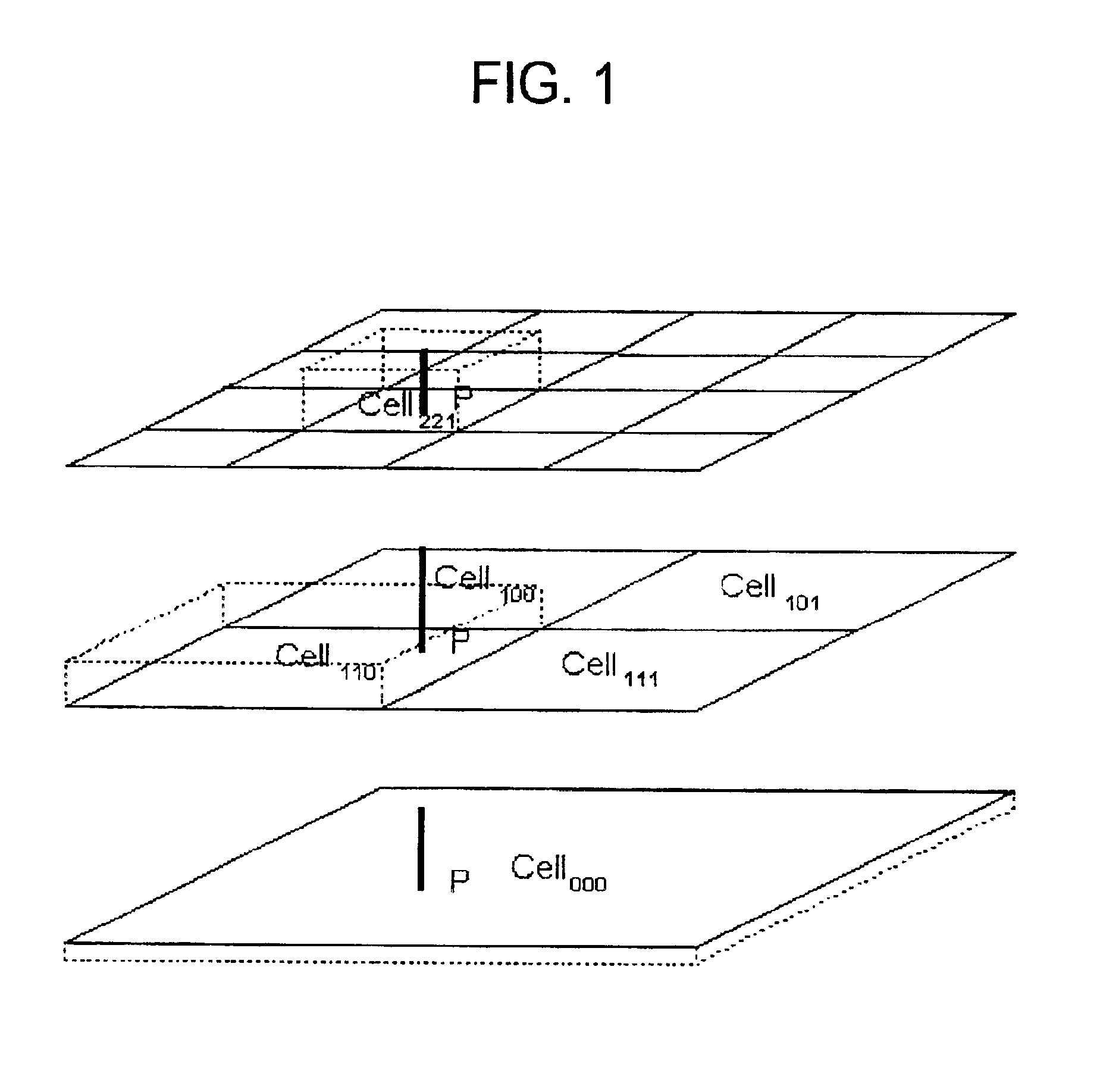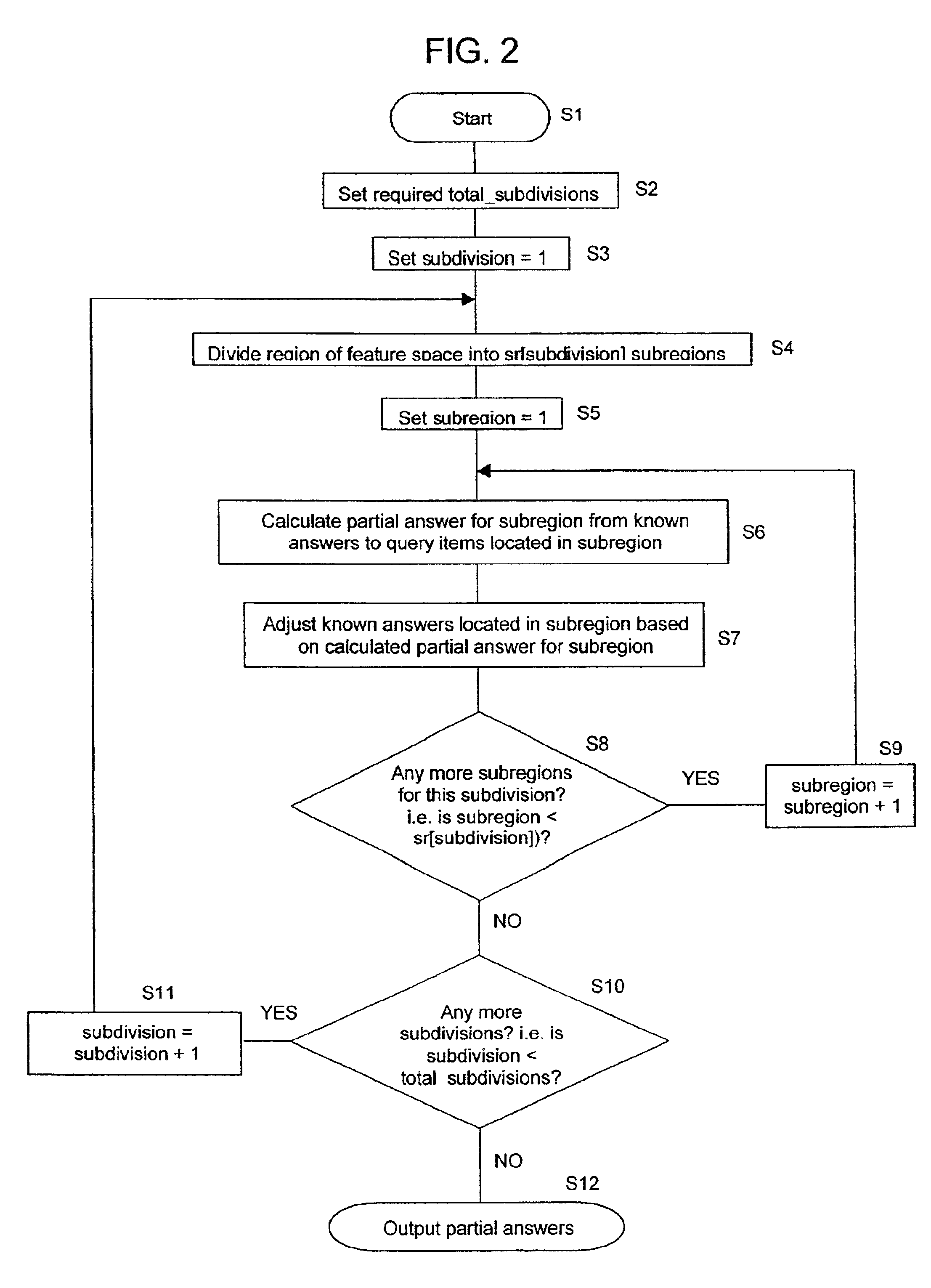Machine learning by construction of a decision function
a decision function and machine learning technology, applied in the field of machine learning techniques, can solve the problems of inability to know in advance the most appropriate internal structure, the need not necessarily the most appropriate for implementation in an inanimate machine, and the computational complexity of finding the optimal separation hyperplane can be high
- Summary
- Abstract
- Description
- Claims
- Application Information
AI Technical Summary
Benefits of technology
Problems solved by technology
Method used
Image
Examples
first embodiment
1. First Embodiment
[0065]For the first embodiment the problem of machine learning will be defined as the problem of providing an answer g, associated with an arbitrary query ƒ on the basis of a given training set T that consists of ordered pairs of given queries and answers, that is T={ƒl,gl}l=1|T|. Any query belongs to the space of queries or feature space F:ƒ∈F⊂R″ and any answer belongs to the space of answers or class assignment space G: g∈G⊂R′″. Obviously T∈F×G . An ordered pair {ƒl,gl}∈T will be referred to as a training point.
[0066]We propose to solve the problem of computer learning by construction of a function D from the feature space F to the class assignment space
[0067]The function D will be referred to as the Decision Function.
[0068]The decision function has the following preferred set of properties:[0069]1. To any query ƒ∈F a value g=D(ƒ) is provided. This value shall be interpreted as a ‘soft decision’ of the class assignment.[0070]2. D is deterministically constructe...
second embodiment
2. Second Embodiment
[0161]For the second preferred embodiment the classification problem will be defined as the problem of providing an answer y, associated with an arbitrary query {right arrow over (x)} on the basis of a given training set T. The training set consists of ordered pairs of queries and answers,
T={{right arrow over (x)}l,yl}l=1M (3)
[0162]Any query belongs to the space of queries or feature space F:{right arrow over (x)}∈F, and any answer belongs to the space of answers or class assignment space Y:y∈Y. Obviously T∈F×Y. An ordered pair {{right arrow over (x)}l,yl}∈T will be referred to as a training point.
[0163]This embodiment considers classification problems with continuous feature spaces, prescaled into a D dimensional unit cube: {right arrow over (x)}∈F=[0,1]D. The classification decision y obtains values in the interval [−1,1].
[0164]The classification problem can be considered as the reconstruction problem of some unknown function ƒ({right arrow over (x)}) that in...
PUM
 Login to View More
Login to View More Abstract
Description
Claims
Application Information
 Login to View More
Login to View More - R&D
- Intellectual Property
- Life Sciences
- Materials
- Tech Scout
- Unparalleled Data Quality
- Higher Quality Content
- 60% Fewer Hallucinations
Browse by: Latest US Patents, China's latest patents, Technical Efficacy Thesaurus, Application Domain, Technology Topic, Popular Technical Reports.
© 2025 PatSnap. All rights reserved.Legal|Privacy policy|Modern Slavery Act Transparency Statement|Sitemap|About US| Contact US: help@patsnap.com



